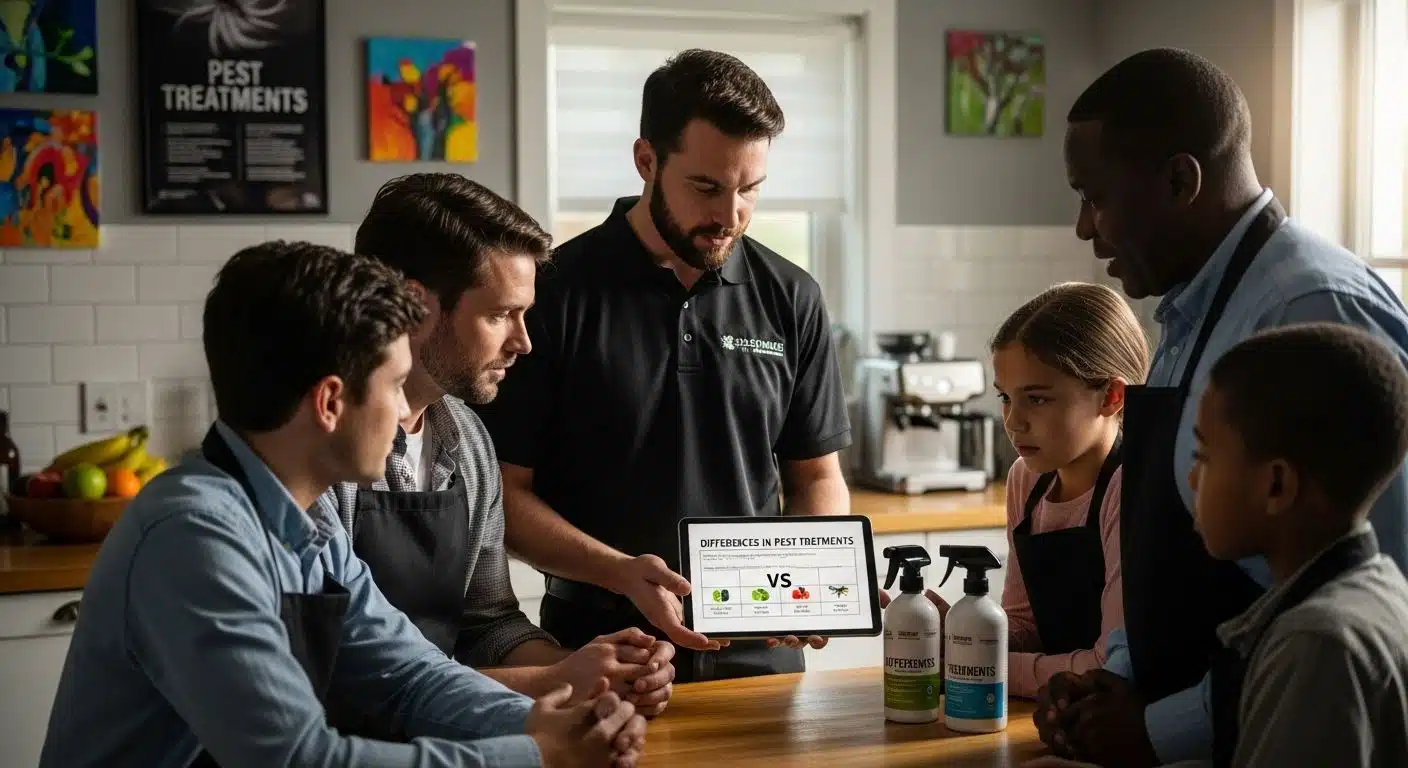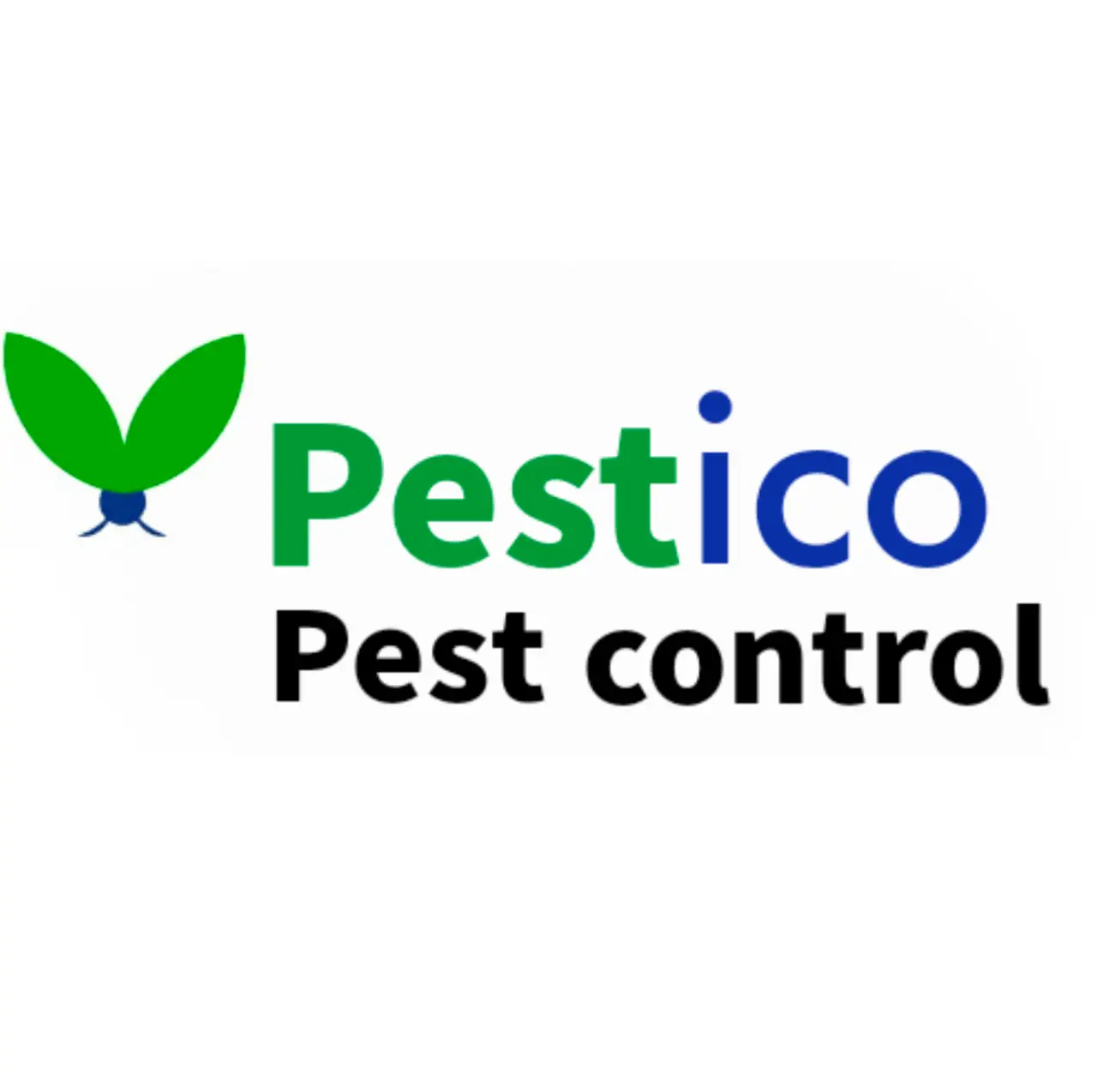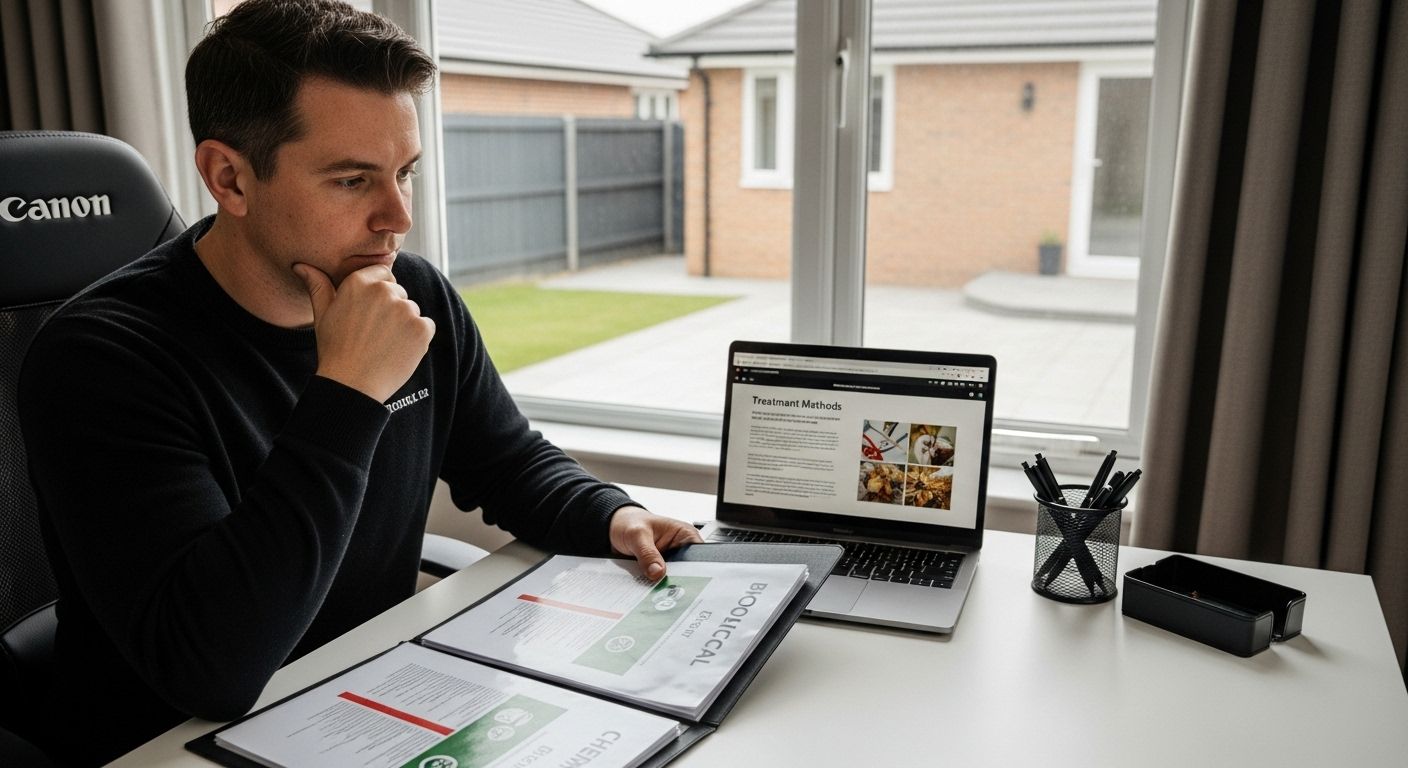Understanding the Differences in Pest Treatments

Pest treatments sound simple, right? Just spray and the bugs are gone. Actually, the real story is way more complex. More than 500 different pest control methods are in use across the US today, from natural predators to high-tech barriers. Most people think pest control is all about harsh chemicals, but some of the most effective solutions never involve a spray can at all. The surprising part is that your best protection might be using less poison, not more.
Table of Contents
- What Are Pest Treatments And Why Do They Matter?
- Key Differences Among Pest Treatment Methods
- Understanding Biological Vs. Chemical Pest Control
- How Integrated Pest Management Works
- Real-World Context: Choosing The Right Treatment For Your Needs
Quick Summary
| Takeaway | Explanation |
|---|---|
| Pest treatments protect health and property. | Systematic approaches manage pests to prevent health risks and damage to structures and the environment. |
| Integrated Pest Management is effective. | IPM combines various methods, prioritizing prevention and minimal chemical use to manage pest populations sustainably. |
| Choose treatment based on environment. | Assess pest type, severity, and specific environmental conditions to select the most effective and responsible treatment. |
| Differentiate chemical from non-chemical methods. | Chemical treatments offer rapid results but can harm the environment, while non-chemical methods focus on prevention with less risk. |
| Tailored solutions are essential for effectiveness. | Custom strategies addressing specific pest challenges ensure comprehensive management and long-term results. |
What Are Pest Treatments and Why Do They Matter?
Pest treatments represent systematic approaches designed to manage, control, and eliminate unwanted organisms that pose risks to human health, property, and environmental quality. Understanding these treatments goes beyond simple extermination strategies and involves comprehensive management techniques that protect residential and commercial spaces.
The Core Purpose of Pest Treatments
At their fundamental level, pest treatments serve multiple critical objectives. They aim to prevent potential damage caused by insects, rodents, and other invasive species. Learn more about comprehensive pest control strategies that protect your property and health.
According to the Environmental Protection Agency, pest treatments encompass several key goals:
- Minimize potential health risks from pest-related diseases
- Prevent structural damage to buildings and infrastructure
- Protect agricultural and residential environments
- Reduce economic losses associated with pest infestations
Types of Pest Treatment Approaches
Modern pest treatments utilize diverse methodologies tailored to specific environments and pest challenges. Integrated Pest Management (IPM) represents an advanced approach that combines multiple strategies:
- Biological control methods
- Chemical interventions
- Physical barriers and exclusion techniques
- Environmental modification
These approaches recognize that effective pest management requires understanding pest behavior, lifecycle, and ecological interactions. Professional treatments analyze specific environmental conditions to develop targeted, efficient solutions that minimize unnecessary chemical usage while maximizing pest control effectiveness.
Below is a comparison table outlining the key differences between chemical and non-chemical pest treatment approaches, summarizing their primary features and outcomes.
| Approach | Description | Advantages | Potential Limitations |
|---|---|---|---|
| Chemical Treatments | Use synthetic pesticides and insecticides | Rapid pest elimination, effective for large infestations | Environmental and health risks |
| Non-Chemical Treatments | Rely on biological, mechanical, and physical methods | Minimize environmental impact, focus on prevention | Often slower results, need strategic planning |
Understanding pest treatments matters because they represent proactive defense mechanisms protecting human health, property integrity, and overall quality of life. By implementing scientifically informed strategies, homeowners and businesses can prevent potential long-term damages and maintain safe, comfortable environments.
Key Differences Among Pest Treatment Methods
Pest treatment methods are not one-size-fits-all solutions but rather specialized approaches tailored to specific pest challenges, environments, and risk levels. Explore our comprehensive guide on safe pest control methods to understand the nuanced strategies professionals employ.
Chemical vs Non-Chemical Treatment Approaches
Traditional pest management strategies primarily diverge into two fundamental categories: chemical and non-chemical treatments. According to research from agricultural extension services, each method offers unique advantages and potential limitations.
Chemical Treatments
- Utilize synthetic pesticides and insecticides
- Provide rapid pest elimination
- Most effective for large-scale infestations
- Potential environmental and health risks
Non-Chemical Treatments
- Employ biological, mechanical, and physical control methods
- Focus on prevention and ecosystem balance
- Minimize environmental impact
- Often require more time and strategic planning
Targeted vs Broad-Spectrum Treatment Strategies
Modern pest control recognizes the importance of precision in treatment selection. Targeted treatments concentrate on specific pest species, minimizing collateral ecosystem disruption. Broad-spectrum approaches, conversely, address multiple pest types simultaneously but may create unintended consequences.
Key considerations for selecting appropriate treatment methods include:
- Specific pest species identification
- Severity of infestation
- Environmental sensitivity
- Long-term prevention goals
- Potential health and safety implications
Understanding these differences enables homeowners and businesses to make informed decisions about pest management, balancing effectiveness with environmental responsibility. Professional pest control services can assess individual situations and recommend the most appropriate treatment approach, ensuring comprehensive protection against unwanted organisms.
Understanding Biological vs. Chemical Pest Control
Biological and chemical pest control represent two fundamentally different approaches to managing unwanted organisms, each with distinct methodologies, environmental impacts, and long-term effectiveness. Learn more about safe pest control strategies to make informed decisions for your property.
Biological Pest Control Mechanisms
According to research from agricultural extension services, biological pest control leverages natural predation, parasitism, and pathogenic interactions to manage pest populations. This approach introduces natural enemies or organisms that control pest species without synthetic chemicals.
Key Biological Control Strategies:
- Predatory insects that consume target pests
- Parasitic organisms that disrupt pest lifecycles
- Microbial agents that cause pest-specific diseases
- Introduction of sterile insects to reduce reproduction
Chemical Pest Control Principles
Chemical treatments utilize synthetic substances designed to eliminate or significantly reduce pest populations through direct intervention. While providing rapid results, these methods carry potential environmental and health considerations.
Key distinctions between biological and chemical approaches include:
The following table compares biological and chemical pest control by highlighting their mechanisms, effectiveness, environmental impact, and long-term sustainability.
| Approach | Mechanism | Speed of Results | Environmental Impact | Long-Term Sustainability |
|---|---|---|---|---|
| Biological | Uses natural predators, parasites, or pathogens | Slower | Low | High; supports ecosystem balance |
| Chemical | Uses synthetic substances to kill pests | Faster | Potentially high | Lower; risk of resistance, impact |
- Speed of pest population reduction
- Long-term ecological impact
- Potential for developing pest resistance
- Cost-effectiveness
- Environmental sustainability
Biological control methods typically offer more sustainable, ecosystem-friendly solutions. Integrated Pest Management increasingly recommends combining biological and targeted chemical interventions to create comprehensive, adaptive pest control strategies that minimize environmental disruption while effectively managing pest challenges.
How Integrated Pest Management Works
Integrated Pest Management (IPM) represents a holistic, science-based approach to pest control that prioritizes long-term prevention and minimal environmental disruption. Explore our pest control basics guide to understand comprehensive management strategies.
Core Principles of IPM
According to the Environmental Protection Agency, IPM operates through a systematic framework that goes beyond traditional extermination methods. The fundamental goal is to manage pest populations while minimizing risks to human health and the environment.
Key IPM Decision-Making Components:
- Comprehensive pest identification
- Thorough ecosystem assessment
- Monitoring pest population dynamics
- Establishing intervention thresholds
- Selecting least-toxic control methods
Strategic Intervention Stages
IPM implementation follows a structured, adaptive process that emphasizes prevention and targeted interventions. The approach typically involves multiple strategic stages:
- Prevention: Creating environmental conditions that discourage pest establishment
- Observation: Regular monitoring to track pest populations and behaviors
- Intervention: Selecting appropriate control methods based on specific circumstances
- Evaluation: Assessing the effectiveness of implemented strategies
Unlike traditional pest control methods that rely heavily on chemical treatments, IPM integrates multiple techniques such as biological controls, habitat manipulation, modification of cultural practices, and judicious use of pesticides. This comprehensive strategy ensures more sustainable, long-term pest management solutions that protect both human health and ecological balance.
This table summarizes the four primary stages of Integrated Pest Management (IPM), defining each step and its main focus in the pest control process.
| IPM Stage | Definition | Main Focus |
|---|---|---|
| Prevention | Create conditions that discourage pest establishment | Reduce likelihood of infestations |
| Observation | Regularly monitor pest activity | Early detection; track pest populations |
| Intervention | Apply control methods based on assessment | Targeted control matched to circumstances |
| Evaluation | Assess effectiveness of interventions | Continuous improvement; adapt strategies |
Real-World Context: Choosing the Right Treatment for Your Needs
Selecting an appropriate pest treatment involves carefully analyzing specific environmental conditions, pest characteristics, and potential long-term implications. Learn about the benefits of local pest control to make informed decisions tailored to your unique situation.
Assessing Treatment Complexity
According to research in public health management, effective pest treatment selection requires comprehensive evaluation of multiple interconnected factors. Successful pest management goes beyond immediate elimination and considers broader ecological and health implications.
Critical Evaluation Factors:
- Type and severity of pest infestation
- Specific property characteristics
- Presence of children or sensitive populations
- Environmental sensitivity
- Budget and long-term maintenance requirements
Matching Treatment to Specific Scenarios
Different pest challenges demand nuanced, specialized approaches. Residential environments might require gentler, more preventative methods, while agricultural or commercial spaces could necessitate more aggressive interventions.
Key considerations for treatment selection include:
- Residential Settings: Prioritize low-toxicity, family-safe solutions
- Agricultural Environments: Focus on ecosystem-balanced interventions
- Commercial Spaces: Emphasize rapid, comprehensive elimination
- Sensitive Areas: Implement minimally invasive biological controls
Professional pest control experts can provide tailored recommendations by conducting thorough property assessments, identifying specific pest species, and developing customized treatment strategies that balance effectiveness, safety, and environmental responsibility.
Discover Effective Pest Solutions Personalized for Your Home
Confused about which pest treatment actually fits your home’s unique needs? If you feel overwhelmed sorting through chemical, biological, and integrated pest management options, you’re not alone. Your top concerns—safety for family, long-term results, and peace of mind—are exactly what drive our local, family-owned approach to pest control. We understand how important it is to choose the right treatment without risking your health or home environment. See how we deliver the results you need with an expert touch in every service.
Choose smarter pest protection today. Visit our main site for trusted pest, termite, mosquito, and rodent control that matches the science-backed options discussed in our article. Take advantage of our affordable pricing and family-first service to keep your household safe—schedule your inspection now and experience the difference right away.
Frequently Asked Questions
What are the main types of pest treatment methods?
Pest treatment methods generally fall into two main categories: chemical and non-chemical treatments. Chemical treatments utilize synthetic pesticides for rapid pest elimination, while non-chemical treatments focus on biological and mechanical methods that aim to maintain ecosystem balance and minimize environmental impact.
How does Integrated Pest Management (IPM) differ from traditional pest control?
IPM is a holistic approach that emphasizes long-term prevention and minimal environmental disruption, combining various treatment methods. Unlike traditional pest control, which often relies heavily on chemicals, IPM uses comprehensive strategies like monitoring and prevention alongside targeted interventions.
What are biological control methods in pest management?
Biological control methods involve using natural predators, parasites, or pathogens to manage pest populations. This approach includes introducing beneficial insects that prey on pests or employing microbial agents that target specific pest diseases, promoting a more sustainable and eco-friendly pest management solution.
What should I consider when choosing a pest treatment method?
When selecting a pest treatment method, consider factors such as the type and severity of the infestation, specific property characteristics, the presence of sensitive populations (like children or pets), environmental impacts, and long-term maintenance costs. Professional pest control services can help assess these conditions for effective treatment recommendations.


